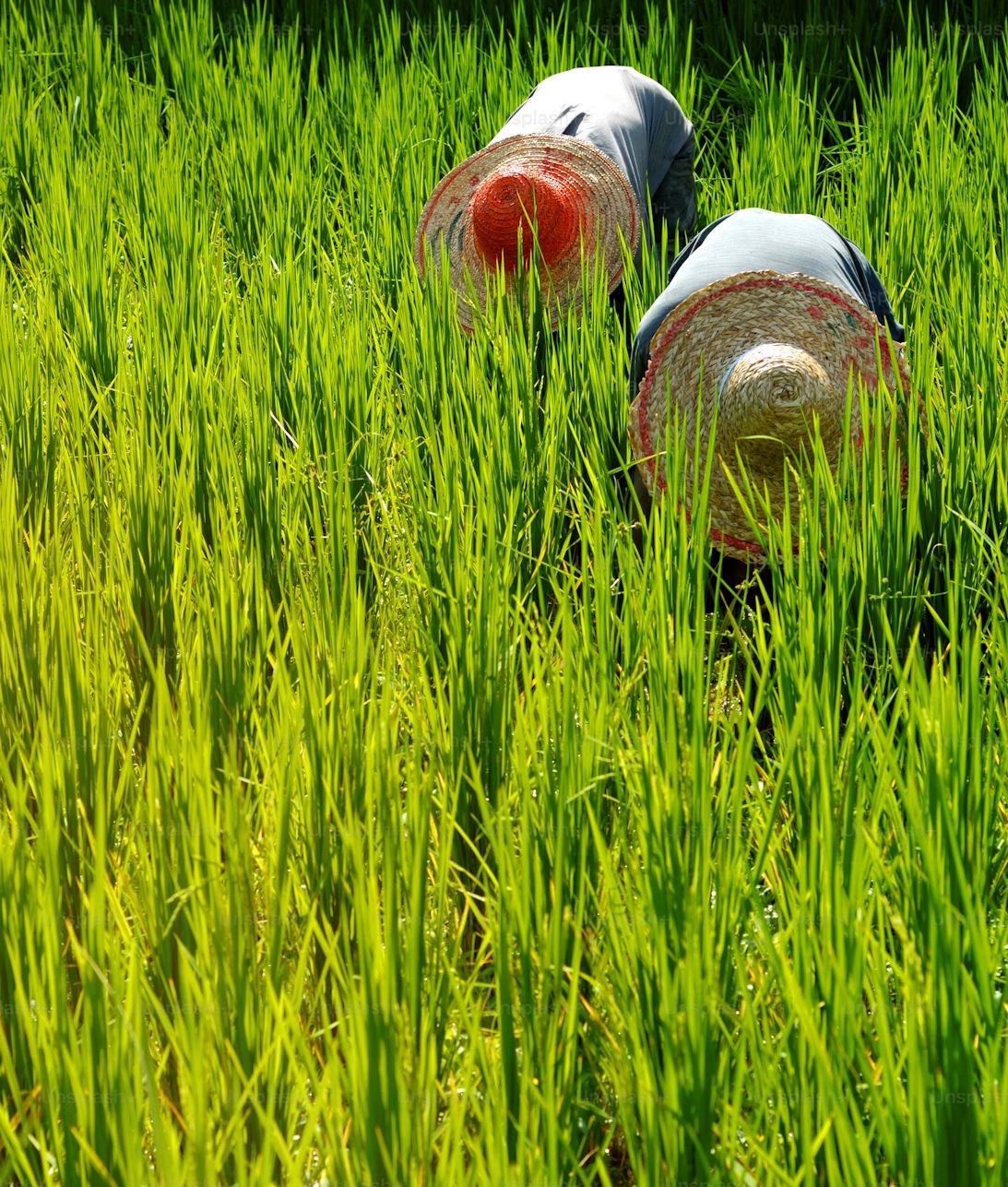
Juncao: Harnessing Fungus Grass for Green Growth and Resilience in the Global South
In the face of persistent food insecurity across the Global South, increasingly exacerbated by climate change, the search for scalable, sustainable, and locally adaptable agricultural solutions is crucial. One promising response is Juncao, an innovative agri-technology developed by Professor Lin Zhanxi at Fujian Agriculture and Forestry University. Combining biological science with grassroots development, Juncao utilises fast-growing herbaceous grasses to cultivate edible and medicinal mushrooms, feed livestock, generate renewable energy, and restore degraded landscapes. What makes Juncao especially compelling is its versatility and accessibility: it requires minimal capital investment, relies on locally available plant species, and can be adapted to diverse ecological and socio-economic contexts. Supported by China’s Agricultural Technology Demonstration Centres, United Nations Department of Economic and Social Affairs (UNDESA) initiatives, and South-South cooperation networks, Juncao is increasingly recognised as a powerful tool to advance multiple Sustainable Development Goals, from food security and poverty reduction to climate resilience and economic empowerment.
What Is Juncao Technology?
Juncao is a hybrid of ‘jun’ (fungus) and ‘cao’ (grass). Originally conceived to replace wood-based mushroom cultivation substrates, Juncao utilises purpose-bred grasses that grow prolifically under tropical and subtropical conditions. These grasses – such as Pennisetum giganteum and Dicranopteris dichotoma – are now used not only for mushroom production, but also as high-protein livestock fodder, raw material for fibreboard and paper, and a feedstock for biomass energy (FAFU, 2024). So far, more than 56 species of mushrooms have been successfully cultivated on Juncao grasses. By replacing hardwood with renewable grasses, the technology is intended to help reduce deforestation and carbon emissions while offering an integrated approach to resource-efficient agriculture.
Importantly, Juncao grasses can be grown in marginal soils, landfill sites, degraded flood lands, and even desertified regions. Moreover, their deep root systems improve soil stability, increase organic matter content (humus), and facilitate the restoration of ecological functions. In this way, Juncao transcends its simply agronomic origins, acting as both a potential economic and ecological lever for sustainable change.
Agricultural Impact, Food Security and Energy Applications
Empirical analysis confirms the potential of Juncao-related interventions to enhance agricultural productivity. A 2024 study, modelling the performance of China’s ATDCs in 14 African countries, found significant increases in both harvest area (24.11%) and crop output (17.23%) for demonstration crops, including rice, maize, and sorghum, when compared to non-demonstration crops (Lin and Cui, 2024). This suggests that targeted support via ATDCs, many of which include Juncao mushroom cultivation, can stimulate local production and bolster domestic food security.
However, the utility of Juncao grasses extends well beyond mushrooms. Their nutritional composition, rich in crude protein and trace minerals, makes them ideal for livestock feed. Trials conducted in China demonstrated that Juncao silage performed as well as corn in weight gain trials for cattle. Similarly, a 2023 study in Fiji found that Juncao grass, when used as silage, supported animal growth while helping mitigate seasonal fodder shortages. In one test, a single hectare yielded up to 450 tons of green fodder annually, significantly easing pressures on grazing systems (WFP, 2023; Kavish Krishneel and Jovilisi Tabuyaqona, UNDESA, 2024).
Moreover, the potential for renewable energy production from Juncao biomass is significant. One hectare of Giant Juncao grass can yield the bioenergy equivalent of approximately 60 tons of raw coal or 74,000 cubic meters of biogas per year. This positions Juncao as a promising feedstock for decentralised energy solutions, particularly in rural areas lacking access to reliable power (Lin, UNDESA, 2024).
Environmental Restoration and Climate Resilience
Juncao’s ecological benefits are no less compelling. In Inner Mongolia, desertified sand dunes have been rehabilitated with Juncao grasses, resulting in an increase of insect and plant species richness by over 180%. This biodiversity rebound supports ecosystem services such as pollination and nutrient cycling. In Rwanda, contour-based planting of Juncao on hillsides reduced soil erosion by 98.9% and water runoff by 91.9%, due to its deep root systems, demonstrating its effectiveness for integrated watershed management. Carbon sequestration is another notable benefit. Replacing wood with Juncao for substrates in mushroom farming will conserve forests and enhance soil organic carbon. According to the FAFU lifecycle analysis, the carbon fixation potential ranges between 6.7 and 67.5 tons per hectare annually when Juncao grass substitutes for wood products.
Importantly, biosafety assessments, carried out by researchers in Fujian Province, confirm that Juncao grasses pose no invasive threat and therefore require no preventative measures to be taken. With no seeds and asexual reproduction, the grasses are dispersal-controllable and adapt well to diverse agroecological zones without displacing native flora (Lu et al., 2014).
Global Partnerships and South-South Cooperation
Juncao technology expansion exemplifies the potential of South-South cooperation. China has implemented demonstration projects in more than 30 countries, including Papua New Guinea, Madagascar, Central African Republic, Fiji, Uganda, Brazil, and the Solomon Islands. Importantly, these programs align with the objectives of many SDGs as they offer promising solutions to fight poverty (1), hunger (2), and tackle climate change (13) through partnerships (17). Meanwhile, regional forums organised by UNDESA and China’s Mission to the African Union have emphasised inclusive technology transfer tailored to local conditions. For instance, the 2023 ‘Second Regional Workshop on Applications of Juncao Technology’, held in Addis Ababa, featured representatives from numerous African governments, civil society, and research institutions. This forum showcased achievements from ongoing pilot projects and explored integration of Juncao into national development plans.
Challenges and Considerations
Despite its successes, Juncao deployment requires careful navigation of local capacity gaps, governance challenges, and broader geopolitical sensitivities. Limited technical infrastructure, lack of spawn production knowledge, and weak policy coherence can undermine sustainability. Some argue that, while China’s agricultural aid offers intermediary technologies suitable for rural conditions, it does not fundamentally disrupt neoliberal development paradigms. For instance, in Rwanda and Uganda, ATDCs were viewed as effective in empowering medium-sized farmers and entrepreneurs, but less impactful for subsistence households (Lawther, 2017). Additionally, there are legitimate concerns about project transparency and accountability. Lin and Cui (2024) indicate that state-owned enterprises implementing ATDCs were more effective than private contractors due to better governance standards. However, the joint venture phase, intended to commercialise demonstration centres after initial Chinese funding, can often lead to monopolisation and knowledge withholding, as seen in mushroom spawn production in Rwanda.
Finally, geopolitics inevitably impacts Western and recipient-country perceptions of Juncao initiatives. As noted in analysis by Denghua Zhang (2023), growing competition between China and traditional donors in the Pacific has led to strategic recalibrations in aid delivery. While China ostensibly promotes South-South partnerships, scepticism around its long-term intentions persists among policymakers in recipient countries.
Conclusion: A Cautious Embrace
Juncao technology offers a compelling model for sustainable agriculture, ecological restoration, and inclusive development. Its versatility – encompassing farming, feeding, energy, and ecology – enables it to contribute meaningfully across diverse development priorities. Its usage across Africa, Asia, Latin America, and the Pacific highlights its scalability and adaptability. Yet, effective implementation depends not only on the technology itself but also on the social architecture surrounding it. Training, governance, local ownership, and geopolitical awareness must complement agronomic innovation. As countries pursue green transitions and food system self-resilience, Juncao offers both a practical toolkit and a symbolic pathway: one that merges environmental stewardship with economic agency.
The lessons from countries that have adopted Juncao technology are not merely technical case studies – they are evidence that knowledge exchange, South-South cooperation, and inclusive science can yield tangible benefits. It should not be about simply transplanting technology, but rather about co-creating sustainable futures rooted in shared values, localised strategies, and grassroots empowerment – pardon the pun!
With continued support from governments, UN agencies, research institutions, and farmer cooperatives, Juncao’s full potential to drive climate-resilient agriculture and transform livelihoods can be realised. Juncao grass is not a silver bullet – but it may potentially be a green lever. The Global South must not merely adopt Juncao technology – it must adapt it and own it. Only then can this ‘magic grass’ grow not just mushrooms, but autonomy.
References
Fujian Agriculture and Forestry University (FAFU), 20th international conference on Juncao industry development (2024) – https://english.fafu.edu.cn/38/f0/c13172a407792/page.htm
Krishneel, Kavish and Jovilisi Tabuyaqona, ‘Juncao Grass and its Application as Livestock Feed’, at the United Nations Department of Economic and Social Affairs (UNDESA) , International workshop on applications of Juncao technology and its contribution to alleviating poverty, promoting employment and protecting the environment (2024) – https://sdgs.un.org/sites/default/files/2024-03/6.%20Presentation%20by%20Mr.%20Kavish%20Krishneel%20%26%20Mr.%20Jovilisi%20Tabuyaqona.pdf
Lawther, Isaac, ‘Why African countries are interested in building agricultural partnerships with China’, Third World Quarterly, 38(10) (2017), 2312-2329
Lin, Dongmei, The Latest Research Progress and Application of Juncao Technology and Sustainable Development, at the United Nations Department of Economic and Social Affairs (UNDESA), International workshop on applications of Juncao technology and its contribution to alleviating poverty, promoting employment and protecting the environment (2024) – https://sdgs.un.org/sites/default/files/2024-03/5.%20Presentation%20by%20Dr.%20Dongmei%20Lin_0.pdf
Lin, Shen and Cui, Jingbo, ‘South-South cooperation and food security: Evidence from Chinese agricultural technology demonstration Centre in Africa’, China Economic Quarterly Journal, 4(1) (2024), 1-12
Lu, Peng, Yi-Fan Yang, You-Ming Hou and Guo-Dong Lu, ‘The Biosafety Assessment of Introduced Pennisetum sp. In Fujian Province China’, Fujian Journal of Agricultural Sciences, 29(11) (2014), 1132-1137
United Nations Department of Economic and Social Affairs (UNDESA), International workshop on applications of Juncao technology and its contribution to alleviating poverty, promoting employment and protecting the environment (2024) – https://sdgs.un.org/events/international-workshop-applications-juncao-technology-and-its-contribution-alleviating
United Nations Department of Economic and Social Affairs (UNDESA), Second Regional Workshop on “Applications of Juncao Technology and its Contribution to the Achievement of Sustainable Agriculture and the Sustainable Development Goals in Africa” 18-19 December 2023 (2023) – https://sdgs.un.org/events/second-regional-workshop-applications-juncao-technology-and-its-contribution-achievement
WFP China Centre of Excellence, Fiji case study: Juncao silage and livestock feed (2023) – http://www.wfpchinacoe.net/2023-03/21/content_85182454.shtml
Zhang, Denghua, ‘Beijing Reshapes its Pacific Strategy’, in Linda Jaivin, Esther Sunkyung Klein and Annie Luman Ren (eds.), Chains, (2023), 255-261




Leave a Reply